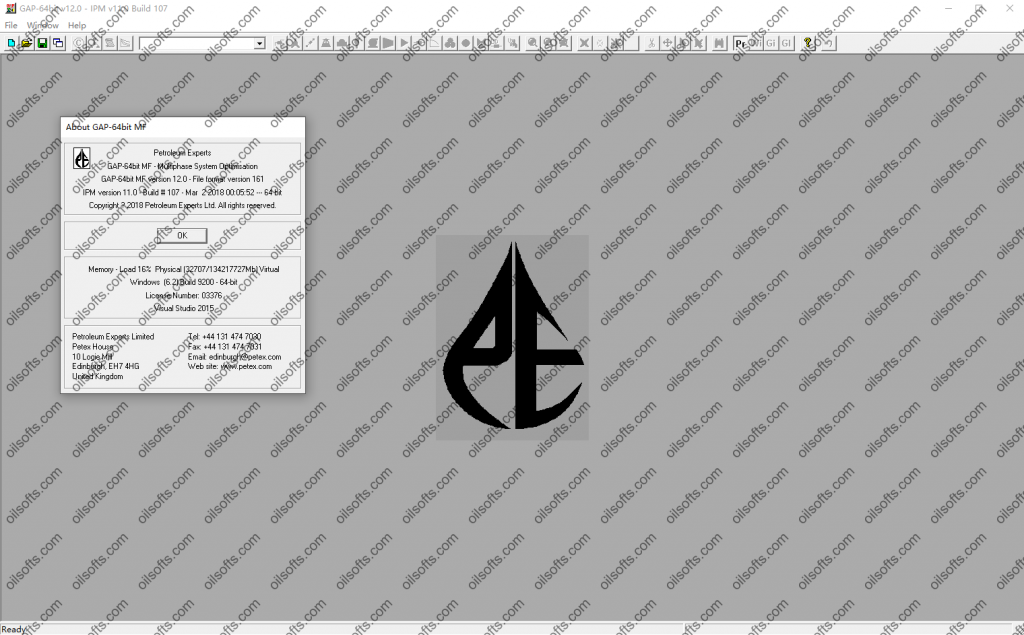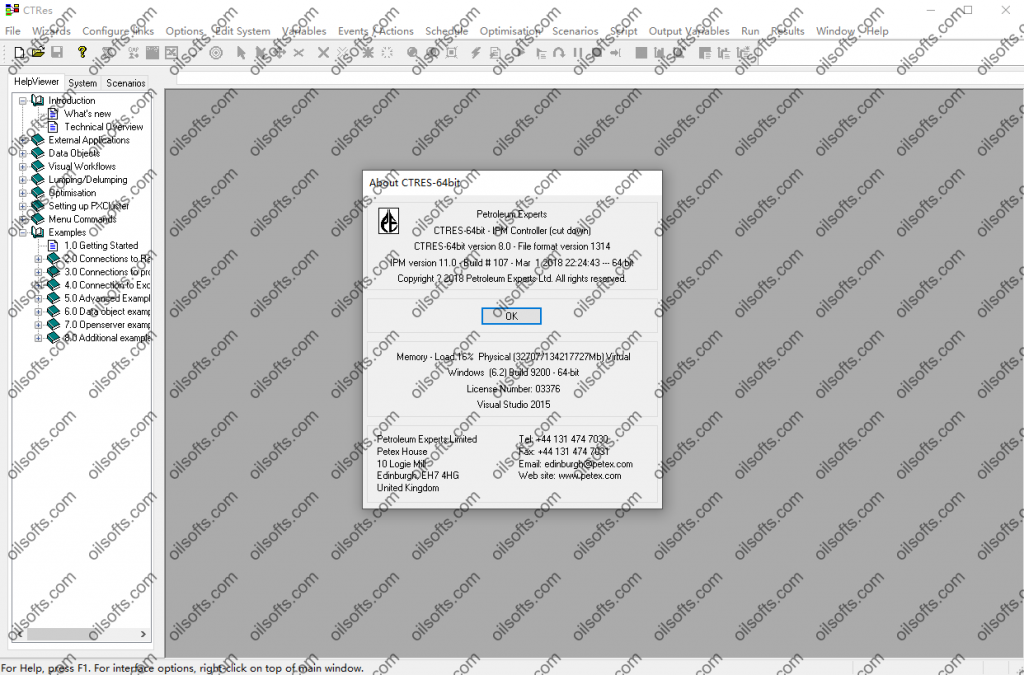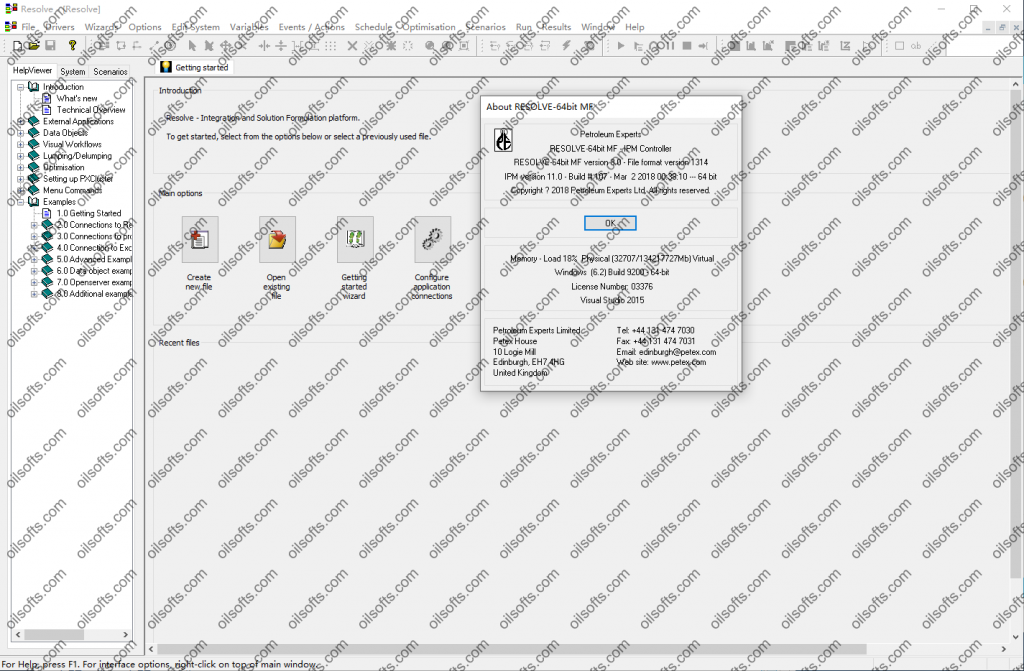GAP
Version 12
The main new developments implemented in GAP version 12 are:
GAP:
Improved Validation and Warnings
Additional Constraints
Max C-Factor, GVF at ESP Inlet, Max Torque (Compressors), Max temperature (nodes)
DCQ Control added to RBNS
Inline Injection Element: Controls/Constraints added to RBNS
Improved Thermal Models – Calculate Heat Transfer Coefficient
Similar to the Enthalpy Balance model PROSPER, allows calculation of heat transfer coefficient taking into account heat tranfer mechanisms and pipeline description and environment.
Group Control Equipment
Allows multiple compressor speed to be controlled with the same value i.e. fixed speed or calculated by RBNS or Optimiser.
Compressor Wear Factor
Allows wear on compressor head to be captured and calibrated.
PVT Match Parameter Import From PROSPER
Ability to bring in PVT matching parameters from PROSPER, if a consistent PVT correlation is selected throughout the model.
OLGAS 3P Emulsion Match Parameters (Pal & Rhodes Parameters)
Plotting Package Enhancements
Prediction VLP/IPR Intersection Playback
Allows prediction results of a well in IPM 11 to be viewed in terms of VLP/IPR curves over time
Plot pipeline gradient between two selected nodes
Improvement to emulsion modelling UI – Select injection fluid to consider for plotting
Report In-situ Rate
Generate Compressor Curve from Test Data
GAP Transient:
New Transient Flow Simulator
Used with GAP to model transient flow within wells and surface pipeline network.
Ability to quickly and easily transform an existing steady-state GAP model into a transient model.
Flexible Model Setup
Allows the entire network of wells and pipeline to be modelled in transient or alternatively a smaller subset of the network can be modelled using transient calculations while the other elements remain steady-state.
Robust IPR Modelling
Allows integration with Transient IPR models for more realistic inflow response
Allows integration with numerical simulators through RESOLVE
2D/3D visualisation of detailed transient results
Direct access to results similar to steady-state pipeline flow assurance
Ability to run slug catcher analysis on transient pipeline/well results
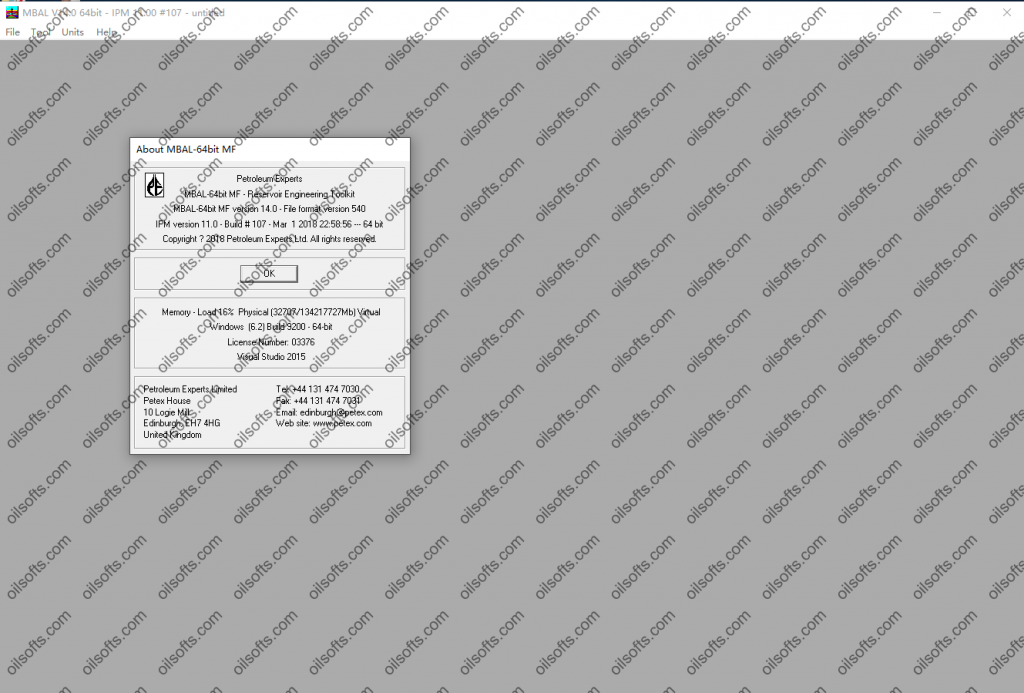
Version 14
MBAL Version 14 – Enhancements Implemented:
History matching and Simulations
В· In the вҖңHistory matching-History SetupвҖқ there is a new option to, вҖңInclude water tank transmissibility water rates in aquifer for energy plotsвҖқ. This is only for multi tanks where a water tank with aquifer has been defined to model a common aquifer.
В· Comments added to a history data point are now displayed in plots as a popup (i.e. when hovering the cursor)
В· Now possible to connect a history well to more than one prediction well.
В· Flying brick plot вҖ“ accessed from analysis button in the history simulation and prediction plot. Shows the various components for expansion and production for a particular time step. It is also possible to do an animation so it skips thru all the time steps.
Tight Reservoir
В· Phase correction has been added to tight reservoir wells in MBAL. This is the same correction as in ResolveвҖҷs tight reservoir object.
PVT
В· Added option to model gas dissolved in water
Miscellaneous
В· Undo facility under input menu allowing users to undo a change to the main interface (i.e. the addition of a tank element / transmissibility). В· MBAL will now auto-save the current data to a file in the temporary directory in case the PC fails or MBAL crashes.
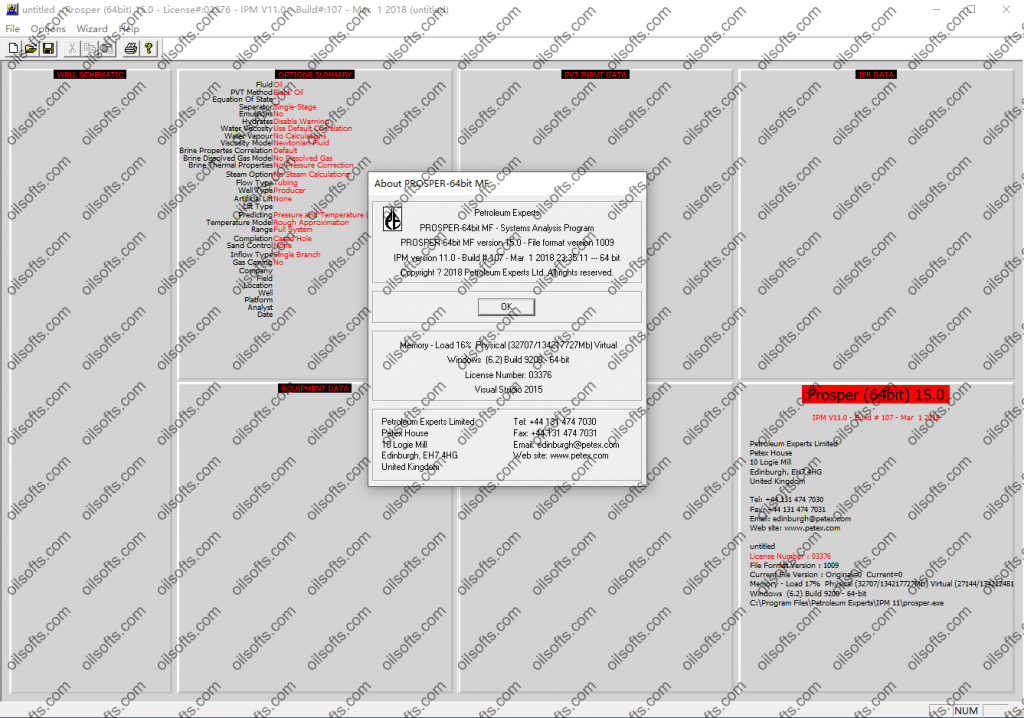
This is a list of enhancements to Prosper for each new Version released.
Version 15.0
This is a summary of the main additions that have been incorporated into the PROSPER program since the 2016 official release.
Artificial Lift
В· Improved pump/motor/cable database usability and management
VLP Export
В· Ability to export VLP tables in IX Hydraulic (Intersect) format
IPR
В· Addition of stimulation screening tools
o Acidisation and hydraulic fracturing IPR models added to perform screening studies
PVT
В· Enhanced brine modelling
o IAWPS correlation added
VLP/IPR Matching
В· Ability to set rate method
o e.g. linear or geometric spacing
File Compare
В· Ability to compare two different PROSPER files
o Can help with version control to see what changes have been made between versions of the “same” model
Interface
В· Enhanced PVT Input Screen
o All features of PVT (emulsions, matching etc.) can be viewed in the same screen now
В· Enhanced VLP Matching Screen
o Can view deviation of matched and unmatched correlation from test data
o Allows test to be matched to to be selected
В· Enhanced Artificial Lift infterfaces
o All features can be seen in one screen
o Parameters that are no longer applicable based on other setting will not be active
В· Graphical enhancements
o Including peak to peak, period and cross hair features
В· Ability to plot more than one set of IPR test data for multilayer wells
В· Ability to transfer data from Single Point QuickLook into Multi Point QuickLook and vice versa.
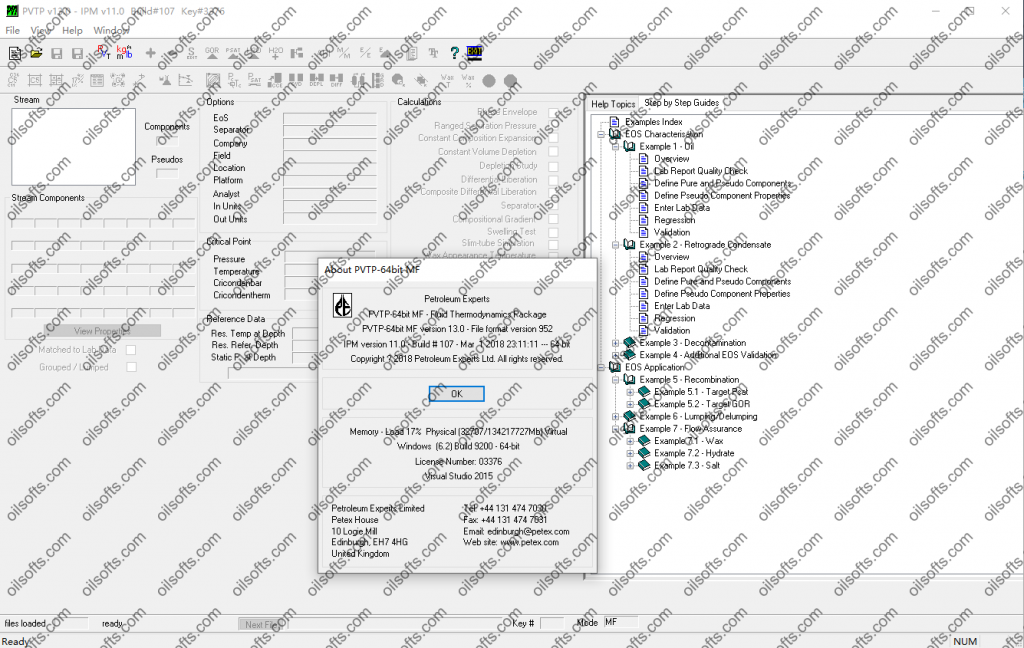 What is New in PVTP 13.0
What is New in PVTP 13.0
Path to Surface Data Object
The RESOLVE Path to Surface Object can now be used in PVTp to define the path to surface used to derive standard condition properties
What is New in PVTP 11.0
Improvements to Hydrafact hydrate model
PVTp code has been improved to provide a greater stability for hydrate calculations. The number of hydrate forming species has been increased. Improved modeling of CO2 hydrates.
New enthalpy model
New enthalpy model was implemented to allow more accurate thermal fluid properties calculation. The total enthalpy for each component is calculated as a sum of ideal and real enthalpy.
Specific heat matching
In previous version specific heat capacity was calculated from a simple correlation. As a result of that specific heat capacity values were overestimated, in particular for heavy oils. In the new version Lee and Kesler model along with possibility of specific heat matching were implemented to improve calculation of thermal properties.
Salt calculations have been added to flash calculations
It is now possible to run flash calculations with possibility of salt deposition and maximum solubility.
OLGA – Leda Flow export format is available
It is now possible to export Black Oil tables to be used in Leda Flow software.
IPM version 11.0
ГҳInterface Enhancements
oNew вҖҳhomeвҖҷ screen
oRedevelopment of the system-view tab on main screen
ГҳNew Data Objects
oProbabilistic Modelling вҖ“ вҖҳSybilвҖҷ and 3rd Party
oOptimisation Engines вҖ“NMSimplex
oGIRO вҖ“ Integer Based Optimisation
oHistory Matching
oGAP вҖ“ Transfer IPR
oGAP вҖ“ MatchIPRData
oData Analysis вҖ“ WaveletAnalysis
oPhase Envelope
oDualStringGasLift
ГҳEnhancements to Existing Data Objects
oESP Fluid Temperature added as match parameter for MWA
oChoke Model selection in Choke RDOs
oPSwarm uses a latin-hypercube approach to enforce a spread of the initial population
oUnit support added to FlexDataStores
ГҳVisual Workflow Enhancements
oIfвҖҰElseIf element replaces If..Else block
oEnhancements to the Form Builder
oProfiling tool
oDifference tool
oImproved вҖҳwatchвҖҷ windows
oIntegration of unit system into workflows
oOperation and property browsers
oVariables вҖ“ Division of variables by category and addition of comments
oInline Functions
oOn-screen Annotations
oImproved handling of DataAndTime workflow methods
oWorkflows can dynamically add objects to an RDO system object
oWorkflow method added to read/write a whole text file in one call
oRun can now be stopped from a Visual Workflow
ГҳAbility to control RESOLVE time-stepping from a workflow
ГҳAll RESOLVE file types (*.rsl and *.rsa) now selectable in file browser
ГҳNumerical simulators compatible with Windows based clusters
ГҳWhen publishing variables, Add To Plot is set on as default and new Add To Workflow option
ГҳImport/Export on Connection Wizard
ГҳAnnotations can be added to RESOLVEвҖҷs main screen
ГҳRun a workflow by right clicking on it
ГҳDevelopment of IFM dump facility
oAllows direct transfer of workflows (including data objects and variables) from DOF to RESOLVE and visa-versa
ГҳBuilt-in Visual Workflows
oVLP Generation
oPVT Transformation
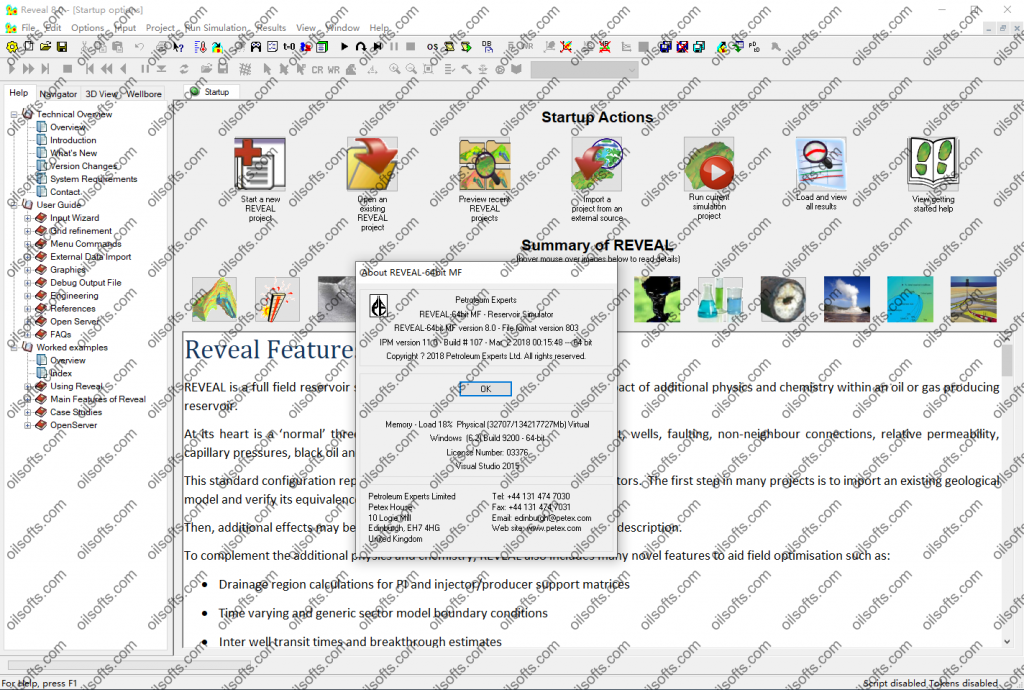
IPM Version 11.0
REVEAL Version 8.0
The main developments implemented in REVEAL version 8.0 are detailed below:
В· Geomechanics and fracturing
– Minimum fracture conductivity
– Permeability changes for stress, strain, friction angle and pre-consolidation stress
– Permeability change hysteresis
– Stress region for interpolation schemes
– Shields number solid transport
– Fracture stress shadowing
– Far field stress varies with fracture size
– Improved transition from propagating to fixed fracture size (injection to production)
– New fracture stress and FE/FD grid coupling options
– Minimum principal stress direction changes
В· Fluids/ Compositional
– Fast flash option set as default under EOS setup
– Performance improvements
В· Water chemistry
– New sodium silicate polymer model formulation based on SPE 143836
– Mineral component saturation index can be set
В· Wells
– Export of tpd added under |Edit |View Project
– Non return ICD option added
– Hydro 2P flow correlation added
– Gaslift valve database added to well builder (tubing and casing sensitive)
– Halliburton AICD database added
– Transient well flow
– Water density modifier (mud)
– New wellbore heater model
– Venturi chokes
– Inline controllable chokes
В· Visualisation
– New User Interface when opening up new REVEAL instance
– Thumbail view to recently saved projects
– Time format can be modified in the 3D visualisation
– 3D text scaling can be modified
– 2D plotting playback control
– Show hide legend option for 2D plotting
– 2D plot rotation, stairs
– Auto scale option for 2D plotting (fit all to window)
– 3D synchronise playback views for multiple realisations of 3D grid results
– 3D vector plotting (speed of oil, water and gas in addition to minimum principal stress direction)
– Core grid geometry grid added
– Per fracture reporting and additional properties reporting on FE 3D fracture
– Extended well results plotting
– User OpenServer variables for plotting
– History import extended
В· Water Chemistry
– Component SI can be set
– Region data for souring
– New sodium silicate polymer model formulation
– Bulk and porous shear model (new polymer shear correlation)
– New polymer degradation (shear and temperature) model
– Polymer hydrolysis model
В· Surfactants
– Soap salinity phase regions
– Surfactant phase boundary variation with surfactant concentration
– Acidic oil sulphate ion exchange
В· Steam
– Steam vapour equilibration
В· Resolve data objects (using Reveal functionality)
– Multi tubing surface connection
– SAGD surface coupling (constraint passing)
– Multi-tubing surface connection
В· Sector model
– Define and create sector models
– Time varying boundary conditions
В· Parallel Solver
– New parallel solver
– Memory handling improved to run significantly larger models

